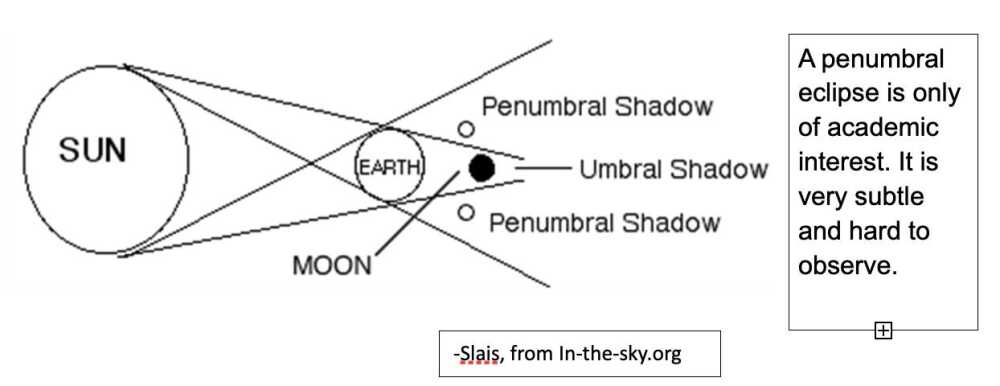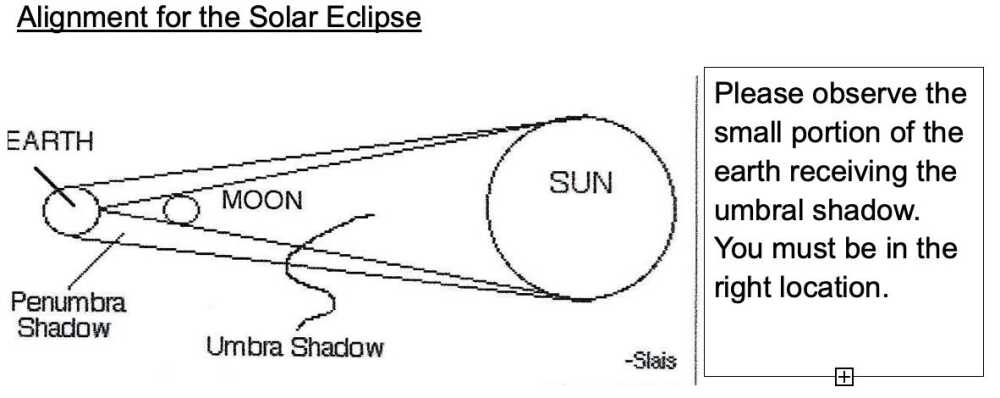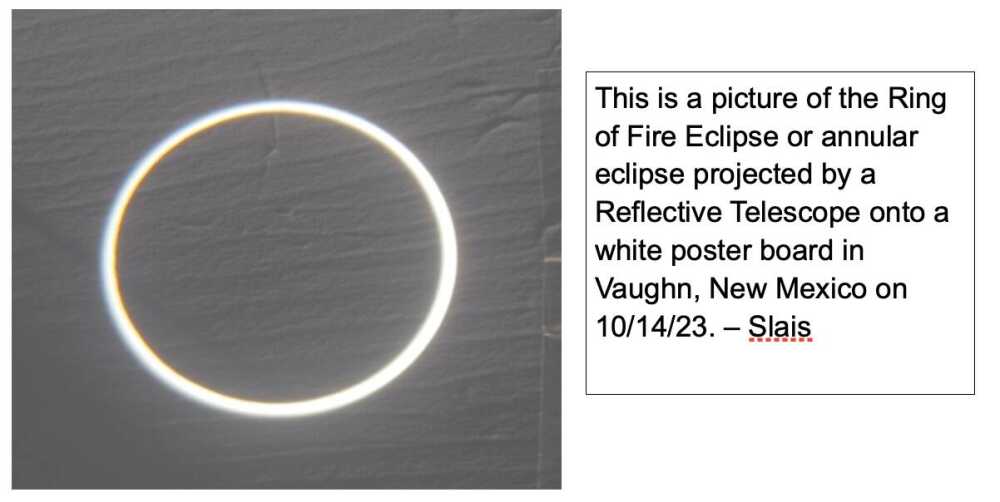Eclipse Corner #5 – Types of Eclipses

An eclipse is a blocking of light when one heavenly body moves into the shadow of another heavenly body. Both the Sun and the Moon can get caught in shadows and disappear from view of the earth. A lunar eclipse occurs in the full moon phase when the Moon is in alignment with the earth-sun plane. The shadow of the earth crosses the Moon creating 3 types of eclipses. The umbra portion of the earth’s shadow is where the direct or umbra shadow of the sunlight is blocked. This umbra will produce a total lunar eclipse if the whole moon is in the umbra. If only part of the Moon is in the umbra shadow then it will be a partial lunar eclipse. The penumbra shadow is not the direct shadow and only some of the light is blocked. Most of the time the penumbral eclipse is faint and not noticeable.
Solar eclipses occur when the moon is in new moon phase or between the earth and the sun. The moon has to be in alignment with the sun-earth plane. Often the alignment will place both the Solar and Lunar eclipse two weeks from each other. This spring, a penumbral lunar eclipse will happen on March 25, two weeks ahead of the April 8, 2024 total eclipse.
Both a total or partial eclipse of the moon is all reflected light of the Sun and presents no danger to the eyes. There are also more eclipses in 2024. Some of the world will see a partial lunar eclipse Sept. 18, 2024, that precedes another annular solar eclipse on Oct. 2, 2024. The path of the Solar Eclipse goes across the Pacific NE to SW and crosses South America, southern Chile and Argentina.

There are three types of Solar eclipses. A Partial Solar Eclipse is when we see only part of the sun blocked out. A Total Solar Eclipse is when the whole sun is covered, like what we will see in April and the third type is called an Annular Eclipse happens when the moon is at apogee (farthest distance from earth) according to Kepler’s Laws and produces a smaller shadow that fits inside the sun and cannot produce totality. This is the Ring of Fire Eclipse like the one the US had on Oct. 14, 2023.
More information on the way from future Eclipse Corners.
Dan Slais is a retired earth science teacher from Waynesville, Mo.. He has also taught college Astronomy for Drury and Columbia College.

